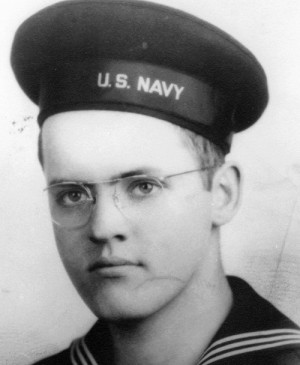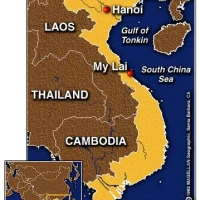- Brauchitsch with Hitler in Warsaw, October 1939
THIS WEEK IN WORLD WAR II
OPERATION CARTWHEEL
It would take nine months but on June 30, 1943, General Douglas MacArthur launches Operation Cartwheel, a multi-pronged assault on Rabaul and several islands in the Solomon Sea in the South Pacific. In these efforts, he succeeds in recapturing more Japanese-controlled territory, further eroding their supremacy in the East.

The eastern part of the Territory of New Guinea, and the northern Solomon Islands; the area in which Operation Cartwheel took place, from June 1943
The purpose of Cartwheel was to destroy the barrier formation Japan had created in the Bismark Archipelago, a collection of islands east of New Guinea in the Solomon Sea.
- The Japanese considered this area vital to the protection of their conquests in the Dutch East Indies and the Philippines.
- For the Allies, Rabaul, in New Britain, was the key to winning control of this theater of operations, as it served as the Japanese naval headquarters and main base.

Operation Cartwheel was the multi-pronged Allied effort to take the Japanese base at Rabaul. (Photo: Simpson Harbor on November 2, 1943)
General MacArthur, the strategic commander of the area, launched a simultaneous attack, on New Guinea and on New Georgia. This was a setup and staging maneuver for the ultimate assault on Rabaul. For Admiral William Halsey of the United States Navy, the landing on New Georgia, proved particularly difficult because of the large Japanese garrison stationed there and the harsh climate and topography. Substantial reinforcements were needed before the region could be controlled, in August.

MacArthur in New Guinea
Left to right: Mr Frank Forde (Australian Minister for the Army); General Douglas MacArthur; General Sir Thomas Blamey; Lieutenant General George C. Kenney; Lieutenant General Edmund Herring; Brigadier General Kenneth Walker.
Source: Boundless. “Macarthur in New Guinea.” Boundless U.S. History. Boundless, 01 Jul. 2015. Retrieved 02 Jul. 2015 from https://www.boundless.com/u-s-history/textbooks/boundless-u-s-history-textbook/from-isolation-to-world-war-ii-1930-1943-26/the-war-in-the-pacific-208/macarthur-in-new-guinea-1147-8851/
One consequence of Cartwheel was a lesson in future strategy. By establishing a “step-by-step” approach to invasion, the Allies unwittingly gave the Japanese time to regroup and establish their next line of defense. The Allies then decided that a new strategy was to be deployed, that of leaving certain islands, or parts thereof, to “wither on the vine,” rather than waste valuable time and manpower in fighting it out for marginal gains. A leapfrogging strategy was then employed by MacArthur, whereby he left in place smaller Japanese strongholds in order to concentrate on “bigger fish.”
This video is 26.06 minutes.




 Check out my other blog
Check out my other blog I'M PUBLISHED
I'M PUBLISHED I'm Published Again
I'm Published Again









The B-25 over the ship is from the attack on Simpson Harbor on November 2, 1943. Just in case you hadn’t located the date and place for that particular image. 🙂
LikeLike
Thanks I will add that to the caption. It is still part of the same operations though right? 9 months? If not, I’ll need to remove it. I appreciate your assistance.
LikeLike
Believe it was part of the same operation.
LikeLike
I did not know about Operation Cartwheel but it makes sense to go after the big fish first and let the little ones starve.
LikeLike